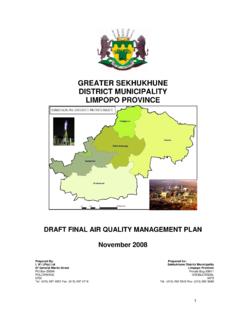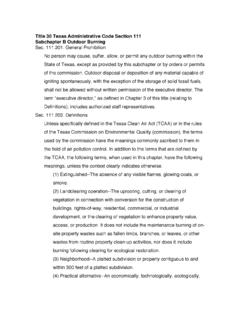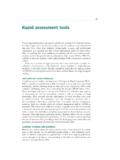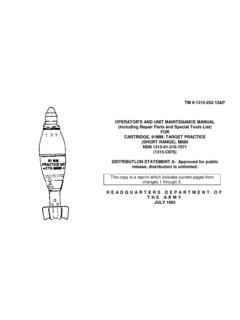Transcription of DELUSORY PARASITOSIS The belief of being lived on by ...
1 Dr. Gale E. Ridge Department of Entomology The Connecticut Agricultural Experiment Station 123 Huntington Street, P. O. Box 1106 New Haven, CT 06504 Phone: (203) 974-8601 Fax: (203) 974-8502 Founded in 1875 Email: science to work for society Website: DELUSORY PARASITOSIS The belief of being lived on by arthropods or other organisms Guide for Health Departments, Medical Communities, and Pest Management Professionals Introduction DELUSORY PARASITOSIS , an unshakable belief or syndrome (Hopkinson 1970) of being attacked by insects, is a very difficult and under-diagnosed condition.
2 It often starts with an actual event or medical condition (the trigger) that may progress over time into mental illness. For those who have had the problem over long time periods, the condition can some times consume a person s life. Although patients may repeatedly seek help from experts, they may refuse to abandon their ideas for test results which contradict their invested beliefs (Sneddon 1983). Sufferers can become antagonistic and relentless in their need to find someone who will confirm their self-diagnoses (Murray and Ash 2004).
3 Those with the obsession, often search the internet, finding web-sites that support their fears. Often under the falsehood of medical authority, some of these sites provide misguided advice and inaccurate information. Poorly informed misdiagnoses by medical professionals may also contribute to the problem. This is a very complex and difficult condition to manage, requiring dedication and time by trained professionals or an interdisciplinary team of experts. N aming the syndrome Because DELUSORY PARASITOSIS (DP) is medically amorphous, several medical specialists have been involved, , psychiatrists, physicians, dermatologists, and medical entomologists.
4 All have tried to define the condition. The term delusions of PARASITOSIS was coined by Wilson and Miller (1946) dispelling earlier use of the words acarophobia (Thibierge 1894), entomophobia, and parasitophobia. These earlier words characterize a mental condition based on the concept of fear. Delusions of PARASITOSIS characterize a belief of being lived on by arthropods. Waldron (1963) shortened the term to DELUSORY PARASITOSIS , which Keh (1983) supported. The term is commonly used today, and is the name of choice for this fact sheet.
5 DELUSORY PARASITOSIS , often called Ekbom syndrome (Hinkle 2010, Ekbom 1938, Koblenzer 1987), belongs to a group of disorders called Monosymptomatic Hypochondriacal Psychoses (Munro 1983, Reilly 1977, Bishop 1983), which include bodily disease and abnormality or physical alteration delusions (Reilly 1977). These conditions tend to be found in individuals with obsessive personality traits and/or relative social isolation. The term Morgellons disease was adopted by a biologist-mother with affected children when a physician could not diagnose or treat their illness.
6 The term was first used by an English physician, Sir Thomas Browne in the 1600 s for children suffering from coughs and convulsions in France (Kellett 1935), but is now being used more narrowly for DP-like symptoms. It is controversial, prompting much discussion in the scientific community. In response to the controversy, a northern California study completed by the Centers for Disease Control and Prevention (CDC) aligned Morgellons with DELUSORY PARASITOSIS (Pearson et al. 2012). Other names used for DELUSORY parsitosis are matchbox and saran-wrap sign (reflecting how specimens are delivered to the analyst), paper mites, sand fleas, cable mites, presenile dermatozoic delusion (used widely in Europe), chronic tactile hallucinosis (Conrad et al.)
7 954), and folie deux, a madness shared by two (Kim et al. 2003). 1 The sensations of DELUSORY PARASITOSIS Descriptions of what sufferers feel range from pricking, tingling, creeping, and crawling sensations to something burrowing through the skin (Hinkle 2000). Descriptions of insects living inside body openings and the alimentary canal are not uncommon. Many describe feelings of itchiness with a continuous need to scratch and/or report seeing actual arthropod specimens addressing them as they or them.
8 Self-mutilation is common (Hinkle 2010, Snedden 1983, Koo and Lebwohl 200 Self-mutilation of the left hand (used with permission) Some conditions which may trigger or cause DELUSORY PARASITOSIS There are at least four types of conditions which may trigger DP: environmental; medical, including psychological (Koo and Lebwohl 2001); drug side effects; and commonly ncountered insects and arachnids (spiders and mites). e Environmental Static electricity. When there is low humidity, static electricity may be a problem, especially around fabric covered furniture and carpeting.)
9 This condition occurs in hospitals, climate-controlled office buildings, college/university dorms, buildings with steam heat, and buildings with closed ventilation systems. Conditions caused by these environments can cause skin sensations interpreted as something crawling on or biting he skin (Scott and Clinton 1967, Simpson 1987, Hinkle 2010). t Pollen. People who move from one region of the United States to another may experience allergies to local tree and grass pollen. This may manifest as unexplained irritation which is interpreted as apparent insect biting (Clark and Adinoff 1989, Cabon et al.)
10 1996, Heiss et l. 1999). a Household or personal products. Detergents such as hand soaps, detergents (especially phosphate-based products), ammonia-based cleaners, cosmetics, hair products and house hold cleaners, some printer inks and clothing with fire retardant can cause dermatitis (Hinkle 2010). Mold. Since Hurricane Katrina, mold has become a more closely studied problem in homes. Damp or water-damaged buildings often have mold. There are many species of household mold. Some mold and mold spores can be medically significant and can cause dermatitis.
















